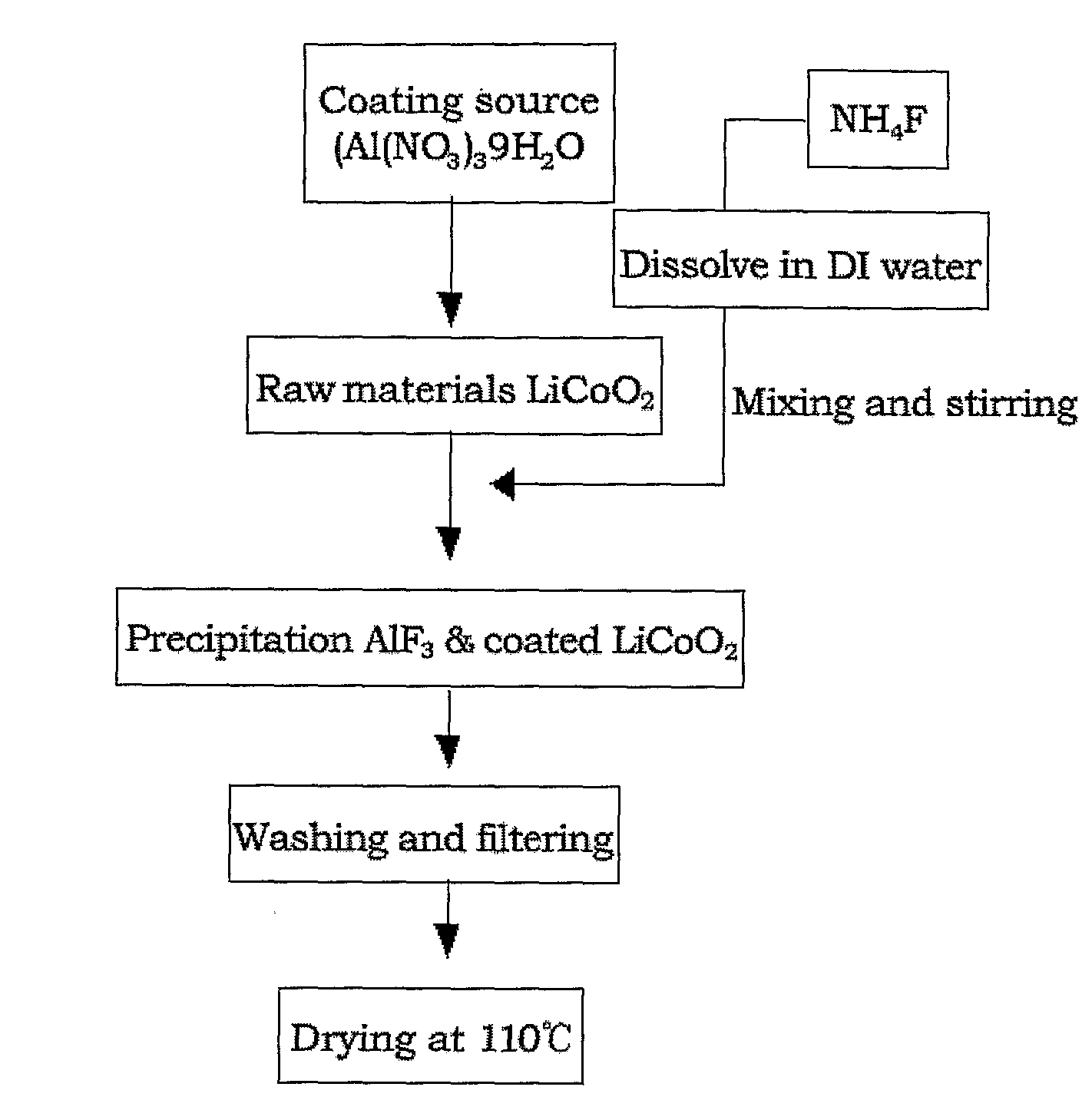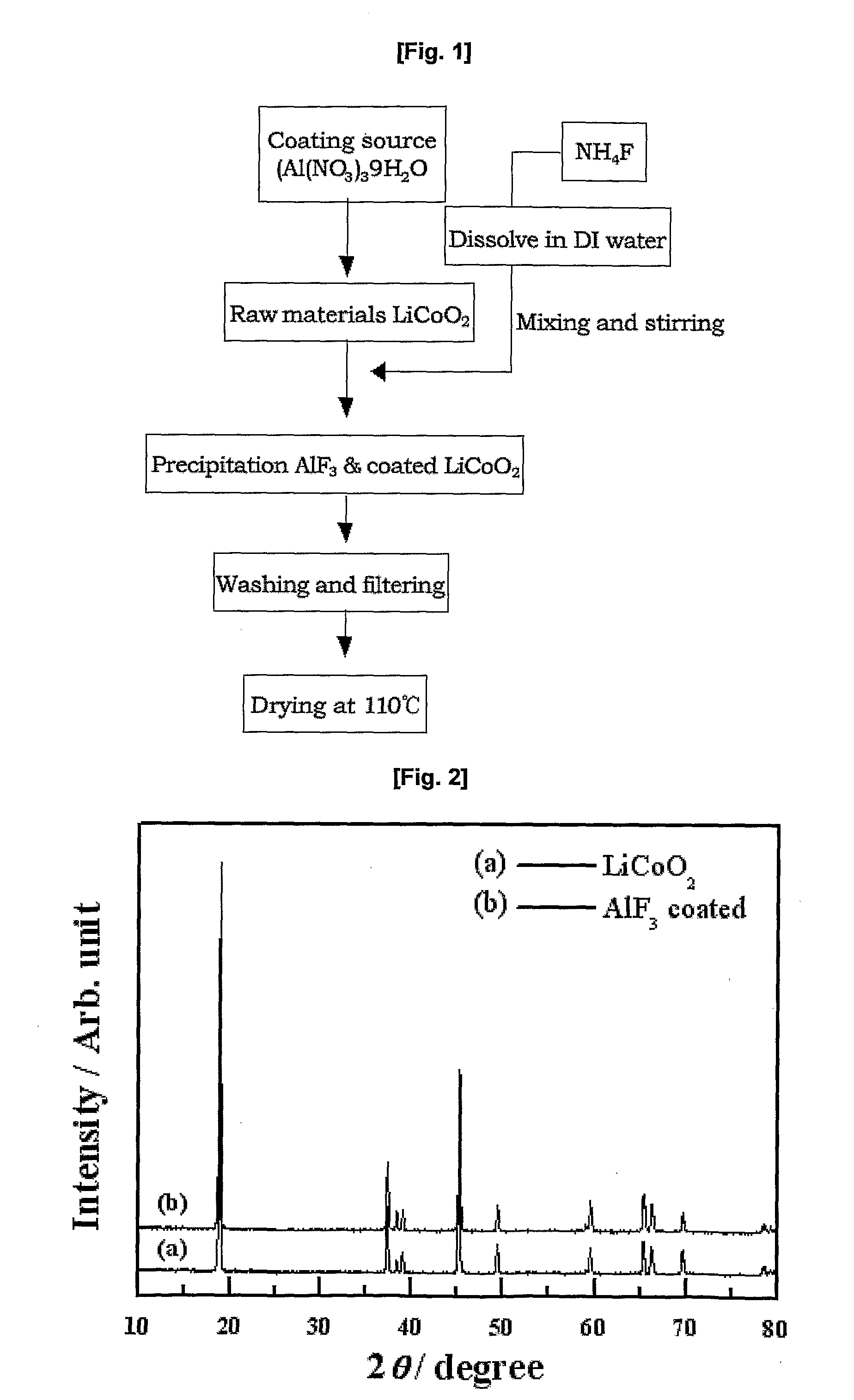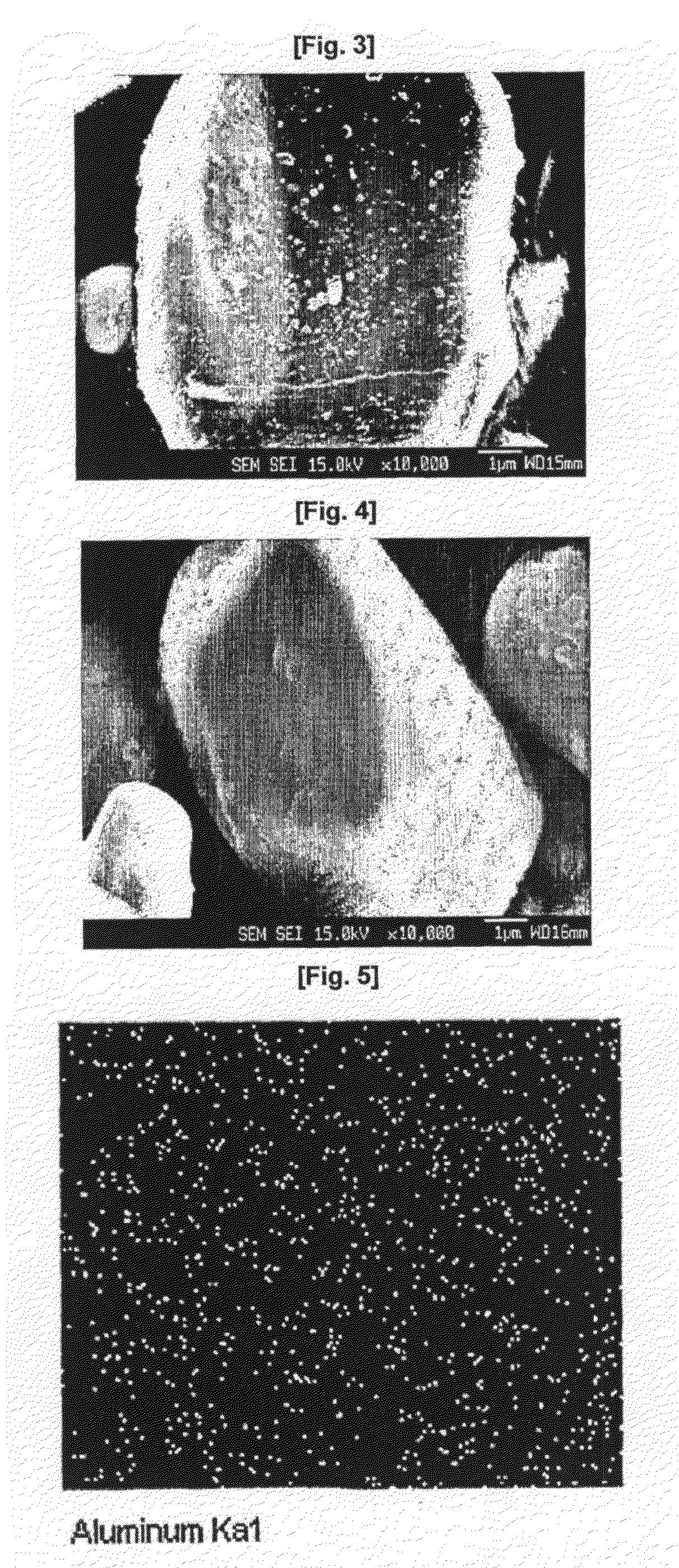Cathode Active Material Coated With Fluorine Compound for Lithium Secondary Batteries and Method for Preparing the Same
a lithium secondary battery and active material technology, applied in the direction of lithium compounds, cell components, nickel compounds, etc., can solve the problems of insufficient cobalt deposits, high price and toxicity, and limited commercial application of limnsub>2/sub>o/sub>4/sub>, so as to prevent deterioration in battery performance, high voltage, and high rate
- Summary
- Abstract
- Description
- Claims
- Application Information
AI Technical Summary
Benefits of technology
Problems solved by technology
Method used
Image
Examples
example 1
[0059]1. Preparation of AlF3-coated LiCoO2
[0060]2 mol % of Al(NO3)3.9H2O was dissolved in 150 ml of distilled water in a 500-ml beaker, and then a commercially available LiCoO2 active material was contained therein. The mixture was stirred. Separately, 150 ml of a solution of NH4F (6 mol %) was continuously added to the previous solution at a flow rate of 1 ml / min while maintaining the temperature of the reactor at 80° C. The mixed solution was subjected to co-precipitation, followed by stirring for 24 hours. At this time, the average temperature of the reactor was maintained at 80° C. The reason for the high co-precipitation reaction temperature is that the co-precipitation of AlF3 enables the formation of a precipitate with a high degree of dispersion in a complex state. The LiCoO2 coated with the fluorine compound was washed with distilled water, dried in a hot-air thermostat at 110° C. for 12 hours, and annealed in an inert atmosphere at 400° C., giving the final AlF3-coatedLiC...
example 2
[0075]Preparation of ZnF2-coated LiCoO2
[0076]2 mol % of ZN(NO3)3.H2O was dissolved in 150 ml of distilled water in a 500-ml beaker, and then a commercially available LiCoO2 active material was contained therein. The mixture was stirred. Separately, 150 ml of a solution of NH4F (4 mol %) was continuously added to the previous solution at a flow rate of 1 ml / min while maintaining the temperature of the reactor at 80° C. The mixed solution was subjected to co-precipitation, followed by stirring for 24 hours. At this time, the average temperature of the reactor was maintained at about 80° C. The reason for the high co-precipitation reaction temperature is that the co-precipitation of ZnF2 enables the formation of a precipitate with a high degree of dispersion in a complex state. The LiCoO2 coated with the fluorine compound was washed with distilled water, dried in a hot-air thermostat at 110° C. for 12 hours, and annealed in an inert atmosphere at 400° C., giving the final ZnF2-coatedL...
example 3
[0082]Preparation of LiF-Coated LiCoO2
[0083]2 mol % of LiNO3 was dissolved in 150 ml of distilled water in a 500-ml beaker, and then a commercially available LiCoO2 active material was contained therein. The mixture was stirred. Separately, 150 ml of a solution of NH4F (2 mol %) was continuously added to the previous solution at a flow rate of 1 ml / min while maintaining the temperature of the reactor at 80° C. The mixed solution was subjected to co-precipitation, followed by stirring for 24 hours. At this time, the average temperature of the reactor was maintained at about 80° C. The reason for the high co-precipitation reaction temperature is that the co-precipitation of LiF enables the formation of a precipitate with a high degree of dispersion in a complex state. The LiCoO2 coated with the fluorine compound was washed with distilled water, dried in a hot-air thermostat at 110° C. for 12 hours, and annealed in an inert atmosphere at 400° C., giving the final LiF-coatedLiCoO2.
[008...
PUM
| Property | Measurement | Unit |
|---|---|---|
| temperature | aaaaa | aaaaa |
| temperature | aaaaa | aaaaa |
| constant current density | aaaaa | aaaaa |
Abstract
Description
Claims
Application Information
 Login to View More
Login to View More - R&D
- Intellectual Property
- Life Sciences
- Materials
- Tech Scout
- Unparalleled Data Quality
- Higher Quality Content
- 60% Fewer Hallucinations
Browse by: Latest US Patents, China's latest patents, Technical Efficacy Thesaurus, Application Domain, Technology Topic, Popular Technical Reports.
© 2025 PatSnap. All rights reserved.Legal|Privacy policy|Modern Slavery Act Transparency Statement|Sitemap|About US| Contact US: help@patsnap.com



